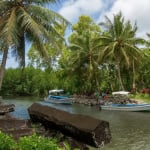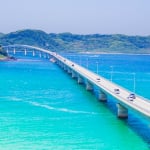Name: Asahi Beer Garden Fukushima Motomiya Branch
Address: 1 Arai Kamimaehata, Motomiya City, Fukushima Prefecture
Official Website: https://www.asahibeer.co.jp/restaurant/garden/motomiya/
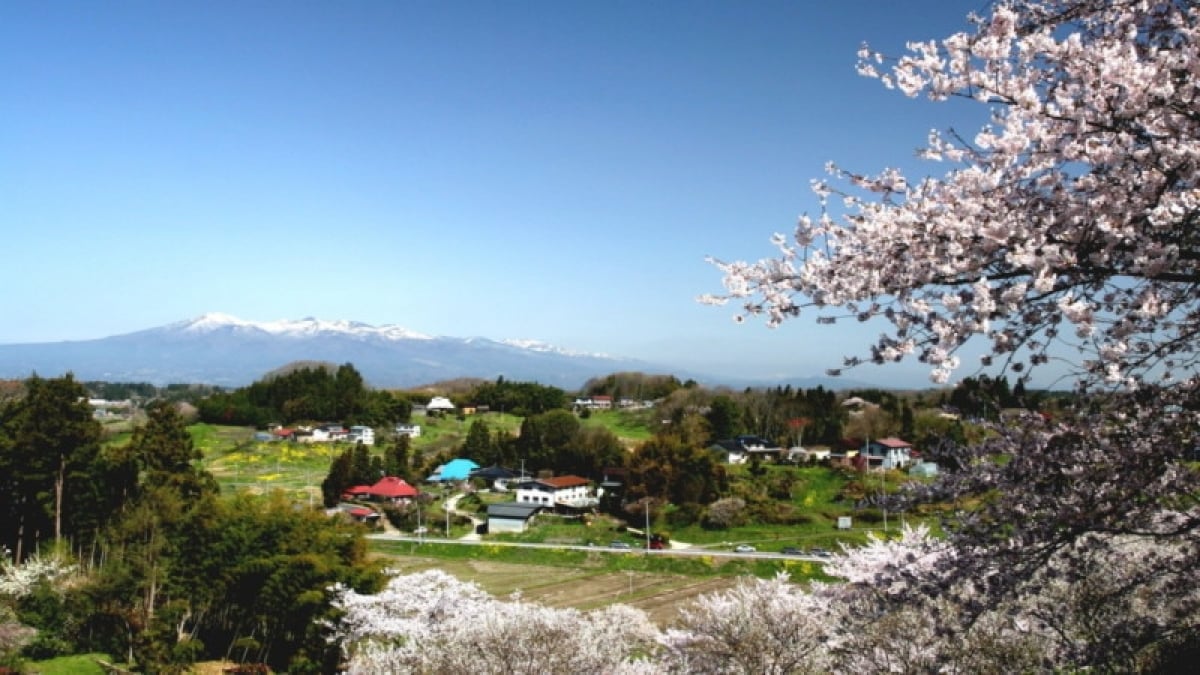
When it comes to sightseeing in Motomiya City, Fukushima Prefecture! 4 must-visit classic tourist spots
Motomiya City (Motomiya-shi) is the smallest city in terms of area and has the lowest population in Fukushima Prefecture. Despite this, Motomiya City has well-developed roads, including the Tohoku Expressway and major highways, and is also served by the Tohoku Shinkansen and the JR Tohoku Main Line, making it a convenient base for sightseeing in Fukushima. This time, we will introduce some popular tourist spots in Motomiya City that you should definitely visit.
table of contents
[x] close
When it comes to sightseeing in Motomiya City, Fukushima Prefecture! 4 must-visit classic tourist spots
1. Asahi Beer Garden Fukushima Motomiya Branch
When it comes to sightseeing in Motomiya City, this is a must-visit spot. Covering approximately 250,000 square meters, the Asahi Beer Fukushima Brewery boasts one of the largest production capacities in Japan and is always bustling with tourists. At the "Asahi Beer Garden Fukushima Motomiya Branch," you can enjoy freshly brewed beer straight from the factory, paired with delicious food.
If you have time during your trip, consider booking a tour of the adjacent brewery! The guided tour provides an engaging explanation of the beer-making process and interesting trivia. At the end of the tour, you can sample freshly brewed Asahi Super Dry, which is a highlight in itself.
You can enjoy three tumblers of cold beer during the tasting session, which is quite a generous amount. Be mindful not to overindulge, as it might make sightseeing afterward a bit challenging. For this reason, it’s recommended to visit the brewery at the end of your Motomiya sightseeing itinerary.
2. Hana to Rekishi no Sato Ja no Hana
Hana to Rekishi no Sato "Ja no Hana" is a park that resembles a botanical garden, opened in 1967 along the western mountains of Motomiya City. The park spans approximately 33,000 square meters and was originally created as a garden during the Meiji era. Located just an 8-minute drive from Motomiya IC, it is easily accessible for sightseeing.
This vibrant park is filled with tulips, wisteria, peonies, roses, hydrangeas, and autumn foliage, attracting visitors throughout the year. The most impressive sight within the park is a maple tree that is over 100 years old. Over the past century, its trunk has grown to about 2 meters in circumference, and in autumn, it turns into a stunning display of red and orange hues.
Starting in early April, around 1,000 Somei Yoshino and weeping cherry trees bloom, marking the arrival of spring. Additionally, about 50,000 tulips create a breathtaking floral spectacle, and a wisteria tree estimated to be 400 years old adds to the serene atmosphere.
Inside the park, you will also find the Ja no Hana Goten, a registered national tangible cultural property. Built in the late Meiji period, it was originally the villa of the wealthy Ito family from old Motomiya Town. The building houses calligraphy by famous figures from the late Edo period and paintings from the Kano school.
Name: Hana to Rekishi no Sato Ja no Hana
Address: 38 Ja no Hana, Motomiya City, Fukushima Prefecture
Official Website: http://janohana.com/
3. Iwatsunosan Iwatsunoji Temple
Iwagakuyama (Iwatsuno-san) Iwagakuji Temple, located in Motomiya City, is situated in the central part of the Abukuma mountain range. The temple is surrounded by a striking granite erosion landscape, which is why the mountain was named Iwagakuyama (meaning "rocky peak"). It was founded by the Buddhist monk Jikaku Daishi as a direct branch of Enryakuji Temple on Mount Hiei. The entire mountain is designated as a national scenic natural monument.
Iwagakuyama stands at approximately 337 meters in elevation. The mountain itself is essentially part of the temple complex, featuring numerous massive and uniquely shaped rock formations. Many of these rocks have Buddhist carvings, particularly of Kannon, the goddess of mercy, which is a breathtaking sight. The pilgrimage route consists of about 30 points of interest, each featuring different rock formations, making for an engaging and immersive experience. The area is particularly stunning during the fresh greenery of spring and the colorful autumn foliage.
Additionally, the temple holds regular Zen meditation sessions, which are open to the public. Visitors from within Motomiya City and tourists alike are welcome to join. If you are traveling by car, Iwagakuyama is about a 20-minute drive from Motomiya IC. The nearest train station is JR Motomiya Station on the Tohoku Main Line.
Name: Iwagakuyama Iwagakuji Temple
Address: 84 Wada Higashiyaguchi, Motomiya City, Fukushima Prefecture
Official Website: http://iwatsunosan.com/
4. Shinozaki Great Cherry Blossoms
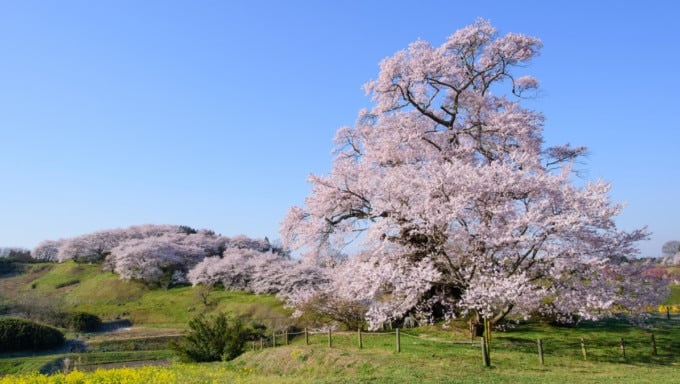
One of the most anticipated cherry blossom sights in Motomiya during spring is the "Shionozaki no Oozakura" (Great Cherry Tree of Shionozaki). The tree reaches full bloom between mid to late April each year. This magnificent Edohigan cherry tree is so impressive that people travel from outside the prefecture just to see it, in addition to local visitors.
Standing amidst a rural landscape, this ancient cherry tree is estimated to be around 600 years old and has watched over Motomiya for centuries. It is also known as "Tanemaki Zakura" (Sowing Cherry Tree) because local farmers believe that planting crops when the tree blooms leads to a good harvest. This deep-rooted connection to the community has made it an important local landmark.
Recognized as a Natural Monument of Fukushima Prefecture, the Shionozaki no Oozakura is highly cherished by locals. When visiting for hanami (cherry blossom viewing), be sure to follow proper etiquette so that this treasured tree can be preserved for future generations.
Name: Shionozaki no Oozakura
Address: Shionozaki, Shiraiwa, Motomiya City, Fukushima Prefecture
Official Website: http://www.city.motomiya.lg.jp/soshiki/15/223.html
◎ Summary
Motomiya City is largely an industrial area, with a smaller population and land area compared to other cities. However, as you will discover upon visiting, it has plenty of noteworthy attractions! Thanks to its convenient transportation access, combining a trip to Motomiya with neighboring Koriyama City is highly recommended. It's an ideal starting point for exploring Fukushima Prefecture.
RELATED ARTICLES
REGIONS
CATEGORIES
FEATURED ON
-
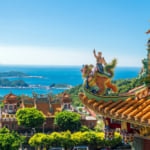
The 19 Best Things to Do in Taiwan in 2022
-

The Best Brunch and Breakfast Spots in London
-
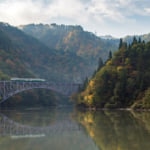
Scenic Train Journeys You Can Take Around Japan
-
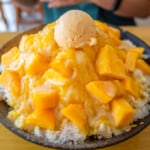
The Top 5 Places to Eat Mango Shaved Ice in Taipei
-
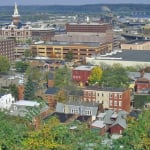
Cultural Crossroads: Dubuque, Iowa! Discover the charm of its must-visit attractions
-
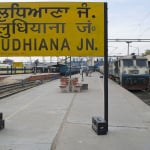
Recommended tourist spots in the Industrial City of Ludhiana, Punjab
-
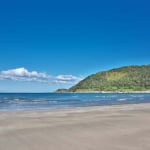
4 Recommended Sightseeing Spots in Hidaka Town, Wakayama Prefecture
-
4 Recommended Tourist Attractions in Enshi | The Grand Canyon of China!
-
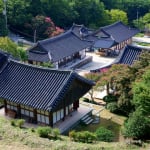
The birthplace of Qin! Recommended sightseeing spots in the historic town of Qingyang, China
MOST POPULAR ON
-
 1
1Doha: Must-see Attractions in the Capital of Qatar
-
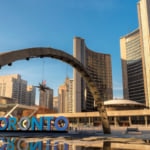 2
2Toronto: 10 Things to do in this Picturesque Canadian City
-
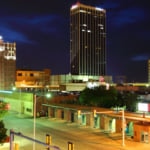 3
3Amarillo: A City Famous for It’s Amazing Canyons, Great History and Music
-
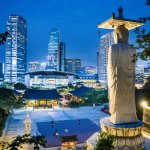 4
4South Korea: Dazzling Scenery, Rich Culture and Fascinating History
-
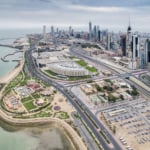 5
5Kuwait: A Country in Middle East Asia Famous for Hot Sand Dunes and Stunning Cityscape


